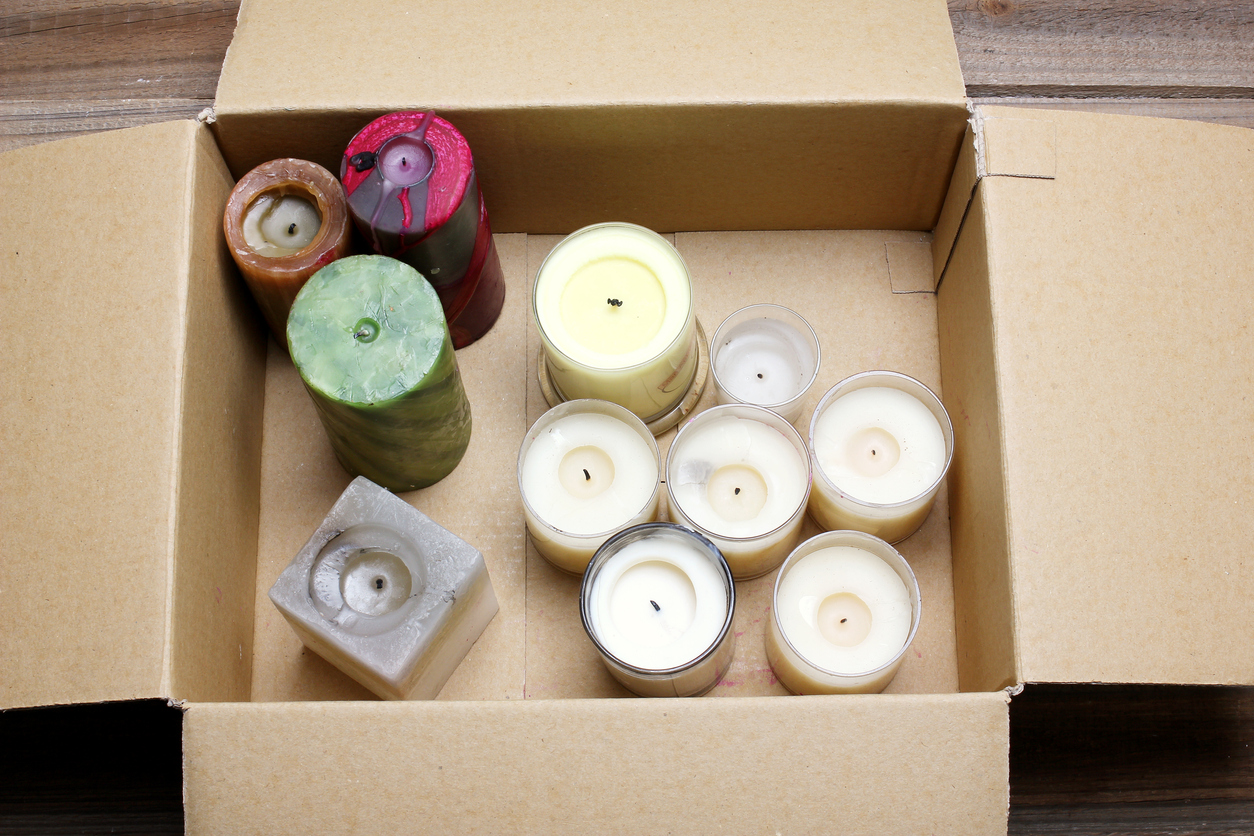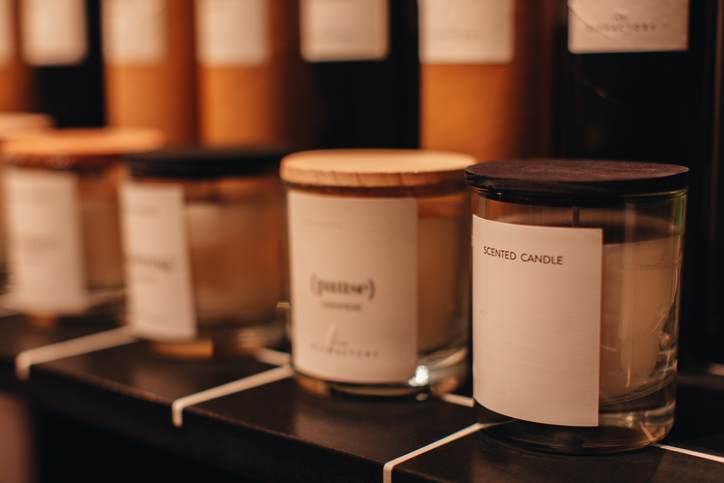Did you know that candles have been used for over 5,000 years, not just for illumination but also for ceremonies, signaling, and decoration? Your choice in candles, whether it’s paraffin, beeswax, or soy, can significantly affect their shelf life when tucked away in your storage.
While it’s common knowledge that paraffin and beeswax candles boast an almost indefinite shelf life if stored under ideal conditions, soy candles present a different story, urging you to use them within a year or two for optimal performance.
As you look into the best ways to extend the life of your candle collection, understanding the nuances of candle composition, along with effective storage techniques, becomes crucial. This knowledge can not only enhance your candle’s longevity but also save you from the disappointment of finding your favorite scent has lost its essence or, worse, become unusable.
So, let’s explore what makes the difference in how long your candles can last and how you can maximize their lifespan, ensuring they’re ready to light up your space whenever you desire.
Key Takeaways
- The lifespan of candles in storage depends on factors such as wax type, size, and storage conditions.
- Different types of wax, such as soy, paraffin, and beeswax, have different storage requirements.
- Proper storage conditions, including cool and dark places, airtight containers, and protection from direct sunlight and temperature fluctuations, can extend the shelf life of candles.
- Signs of degradation in stored candles include discoloration, cracks, faded scent, blooming, and bent or broken wicks. Reviving old candles and repurposing leftover wax can help minimize waste.
Candle Lifespan Basics
Understanding the basics of candle lifespan is crucial, as it varies significantly depending on factors like the candle’s size, the type of wax used, and how many wicks it has. When you’re storing candles, it’s essential to know that their shelf life can greatly depend on these variables.
For instance, luxury 12 oz. candles can burn for around 80 hours, but how you store them can affect their unlit shelf life. Certain candles, such as those made from paraffin, can last almost indefinitely if you store them properly. In contrast, soy candles are best used within a year or two due to their natural composition.
The key to extending a candle’s lifespan involves understanding and optimizing storage conditions. You should always store candles away from direct sunlight and areas with high humidity, as these elements can degrade the wax and affect scent and color. Additionally, avoid temperature fluctuations, which can cause the wax to crack or melt.
The type of wax used also plays a significant role; for example, beeswax and soy wax have different storage requirements. By paying attention to these details, you ensure your unlit candles remain in prime condition for as long as possible.
Factors Affecting Longevity
Considering the various factors that influence a candle’s lifespan, it’s crucial to recognize how the type of wax, quality of ingredients, candle size, wick type, and storage conditions all play interconnected roles. When storing your candles, understanding these elements ensures they last as long as possible.
- Type of Wax & Ingredients: The foundation of your candle significantly dictates its shelf life. Natural waxes like soy or beeswax tend to have a longer lifespan compared to traditional paraffin. Furthermore, the purity and quality of these components can’t be overlooked.
- Candle Size & Wick Type: Generally, larger candles with thicker wicks offer extended burn times, but they must be matched correctly to avoid uneven burning.
- Right Storage Conditions: Properly store your candles in a cool, dark place to prevent warping and fading.
- *Temperature*: Keep away from direct sunlight or heat sources.
- *Air Exposure*: Limit air exposure by wrapping candles or using airtight containers.
Types and Recommendations
Exploring the best ways to store different types of candles ensures they retain their quality and fragrance for as long as possible. Each type of candle wax, from soy to paraffin and beeswax, has its specific storage needs. Let’s dive into the types and recommendations for storing these candles to maximize their lifespan.
| Candle Waxes | Lifespan | Storage Recommendations |
|---|---|---|
| Soy Wax | 1-2 years | Store away from light and heat in an airtight container. |
| Paraffin Wax | Indefinite | Keep in a cool, dark place. Airtight containers are best. |
| Beeswax | Long-lasting | Avoid direct sunlight and store in a dry place. |
Soy candles, known for their eco-friendliness, should be used within a year or two to enjoy their best burn time and fragrance. Paraffin candles, on the other hand, can last almost indefinitely if stored properly. Beeswax candles are renowned for their long-lasting quality, but like all candles, they benefit from specific storage conditions. Keeping your candles away from direct sunlight, extreme temperatures, moisture, and strong odors can significantly extend their shelf life, ensuring you’ll enjoy their light and fragrance for years to come.
Storage Techniques
After examining the specific storage needs for different types of candle waxes, it’s crucial to focus on the general storage techniques that’ll ensure their longevity and performance. Here are a few essential tips to keep in mind:
- Store candles in a cool, dark place: This helps preserve their quality and fragrance. A dark place is especially important for waxes like soy and coconut, which are more prone to discoloration.
- For waxes like soy, keep them away from direct sunlight to maintain their pristine condition.
- Coconut wax, similar to soy, benefits significantly from being kept in a dark environment to prevent fading.
- Cover candles to protect from dust: This also helps to preserve their scent. Using airtight containers can extend the life of the fragrance oils used in the candles.
- Avoid rapid temperature changes: Sudden changes can cause wax to crack or discolor, affecting the candle’s aesthetic and burning quality.
- Keep candles away from extreme temperatures and direct sunlight: This storage technique is essential to help preserve the candles in their best condition for as long as possible.
Signs of Degradation
When candles start showing discoloration, cracks, or a faded scent, it’s a clear sign they’re degrading in storage. These issues don’t just affect the candle’s appearance; they can also diminish the quality and intensity of the fragrance. Over time, the essential oils that give candles their unique scents can evaporate, leaving you with a less aromatic experience.
Moreover, if you notice blooming, which appears as a frosty layer on the wax, or if the wicks become bent or broken, these are additional indicators that your candles aren’t in their prime condition.
Understanding these signs of degradation is crucial for extending the life of your candles and minimizing waste. To combat these issues, consider reviving your old candles. You can trim the wick, gently warm the wax to level it out, and even add a few drops of essential oils to bring back the fragrance.
For candles past their prime, combining and repurposing the leftover wax can give them a new lease on life.
Conclusion
In conclusion, you’ve seen how different candles have varying lifespans, influenced by their wax type, storage conditions, and usage. Remember, while paraffin and beeswax candles can last a long time, soy candles are best used sooner. Proper storage is key to extending their life. Always check for signs of degradation to ensure they’re still good to use.
By following these tips, you’ll make the most of your candles, enjoying their glow and fragrance for as long as possible.



